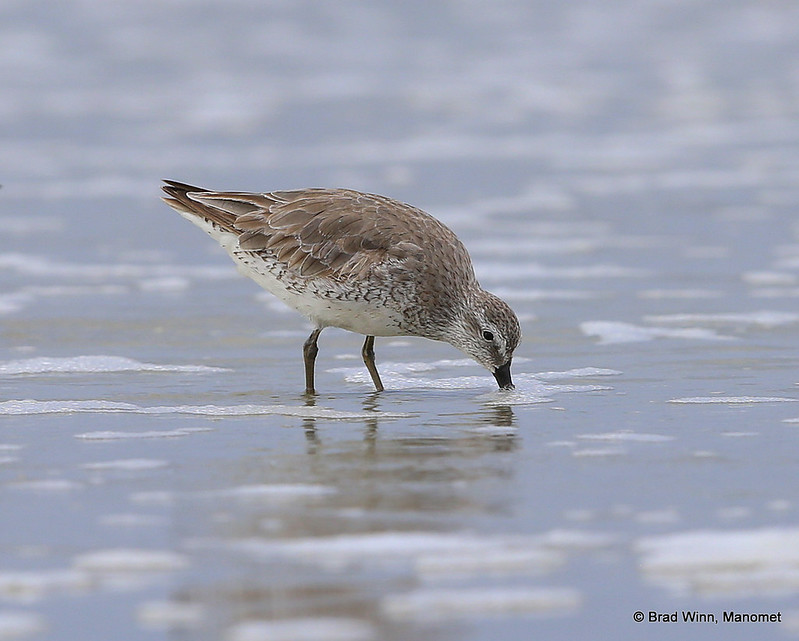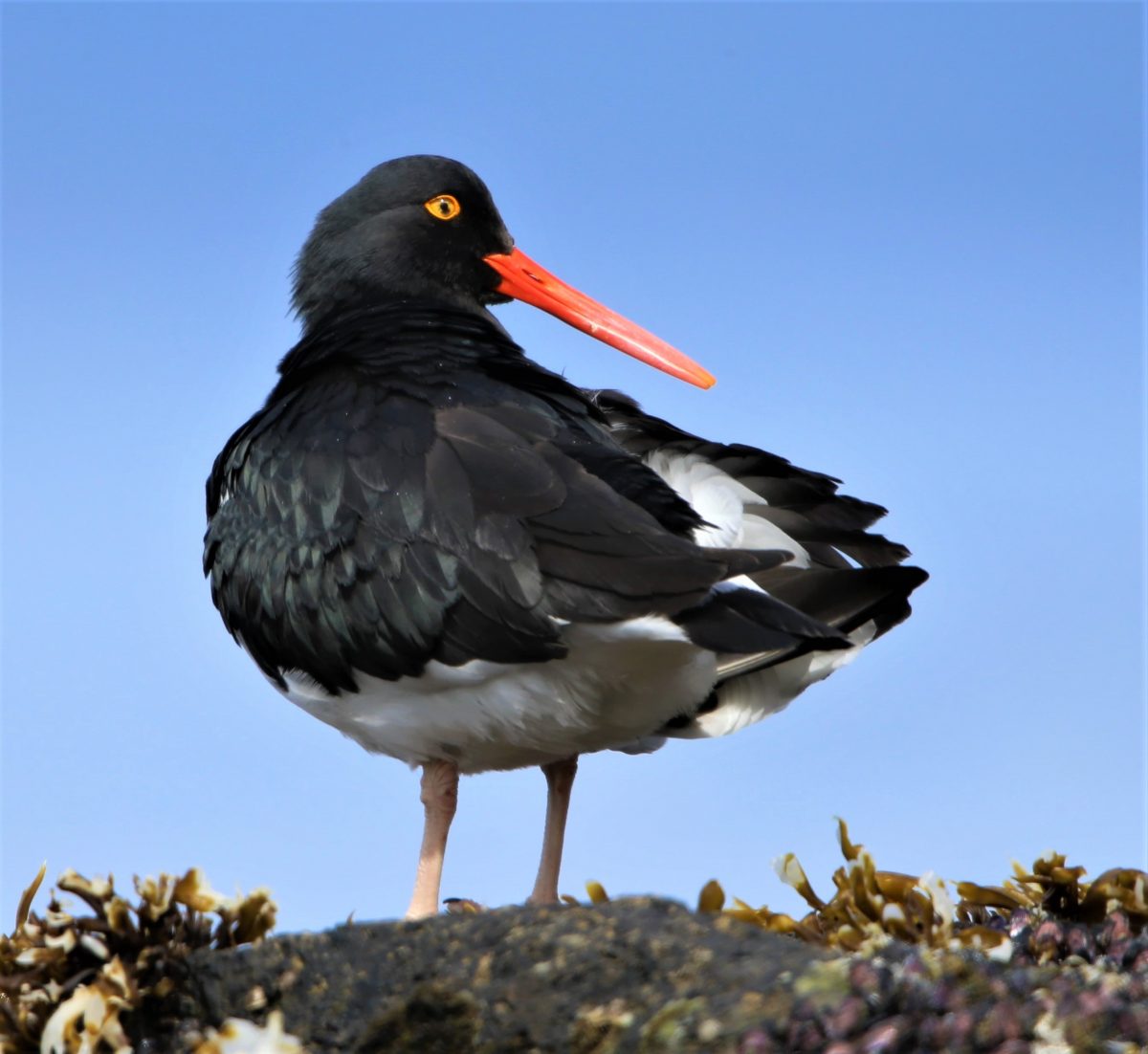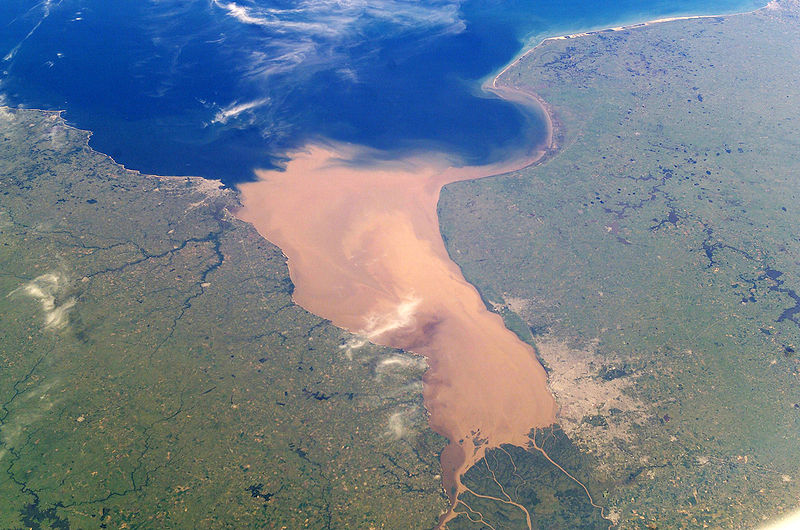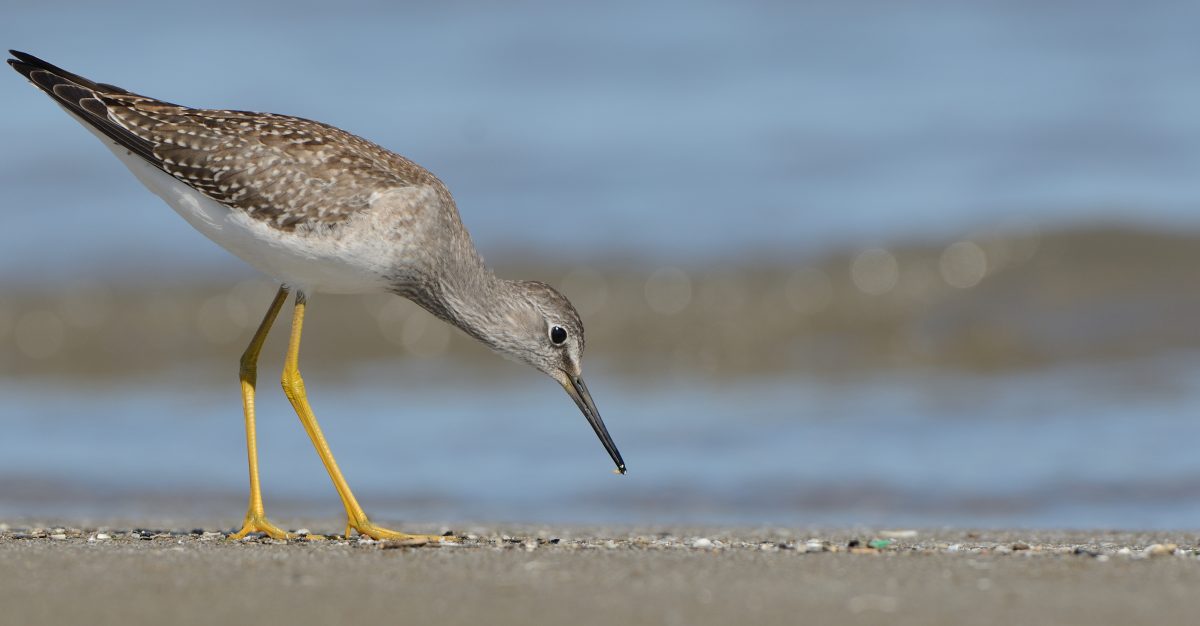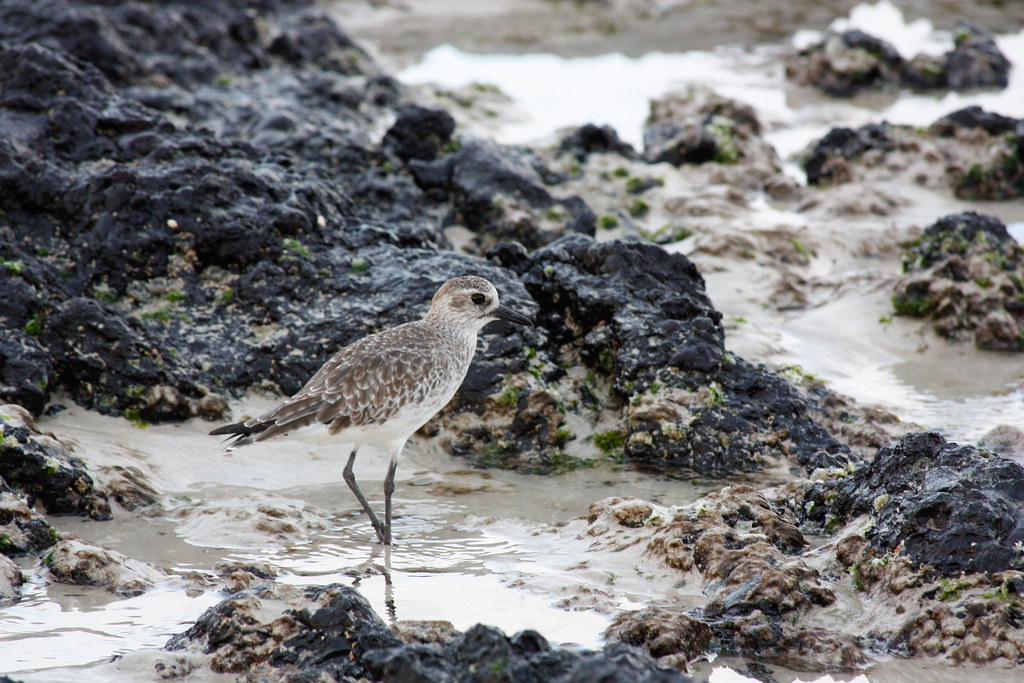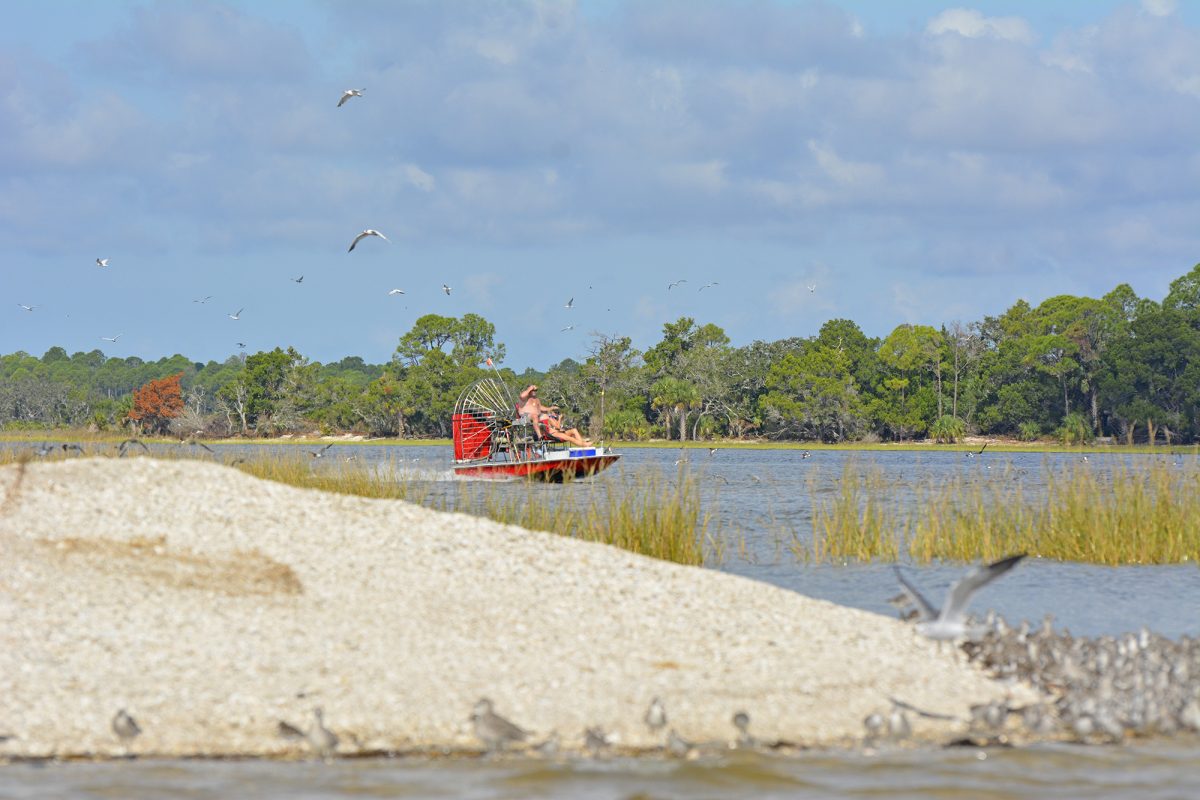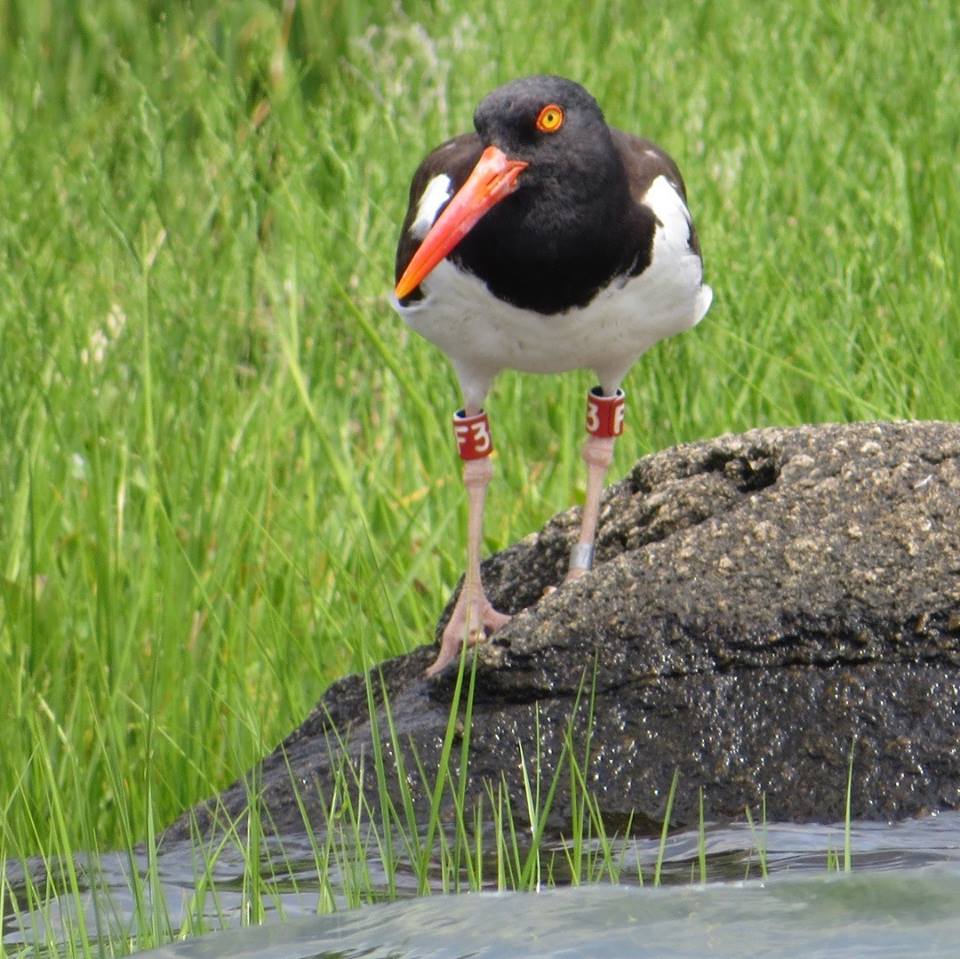Por Salvadora Morales, Especialista en Conservación, WHSRN Son las 12:40 am del martes 3 de noviembre del 2020. Un Huracán de categoría 4 está azotando la costa caribe de Nicaragua, donde vive mi familia, mientras escribo acompaño a mis parientes a la distancia. Los modelos predicen que el Huracán Eta golpeará Wawa Bar, justo la playa donde identifiqué por primera …
Making Space for Red Knots: Community Engagement in Argentina
From Canada to Tierra del Fuego, shorebirds use the beaches of the Atlantic coast for nesting, feeding, and resting. Unfortunately many of these beaches are also popular with human communities. Disturbance to shorebirds is one of the main threats identified in the Atlantic Flyway Shorebird Initiative (AFSI) Business Plan. Unfortunately, behavior change cannot always be achieved just by increasing the …
Aprendiendo a compartir las playas con el Playero Rojizo: involucramiento comunitario en Argentina
Desde Canadá hasta Tierra del Fuego, las aves playeras utilizan playas de la costa atlántica para anidar, alimentarse y descansar. Desafortunadamente, muchas de esas playas también son muy populares entre nuestras comunidades. La perturbación a las aves playeras es una de las amenazas identificadas en el Plan de Negocios de la Iniciativa de Aves Playeras del Corredor del Atlántico (AFSI …
Be An Oystercatcher!
Right Now We All Need To Be Oystercatchers By Susan Heath, Gulf Coast Bird Observatory These are tough times folks. I hope this finds you and your family well and safe at home. For those who must go out to work an essential job – thank you! I’ve been reflecting on how the birds are doing their thing without any …
The First Workshop for the Argentine Shorebird Conservation Plan
With more than 40 representatives present from national and provincial agencies, conservation organizations, and research institutes, on July 2nd and 3rd the first national workshop to develop the Argentine Shorebird Conservation Plan took place at the Aves Argentinas headquarters in Buenos Aires. Organized by the Western Hemisphere Shorebird Reserve Network, Aves Argentinas, Fundación Humedales/Wetlands International, and with the support of …
Atlantic Flyway Shorebird Harvest Workshop
Article by: Benoit Laliberté and Cynthia Pekarik, Canadian Wildlife Service and Brad Andres, U.S. Fish and Wildlife Service On July 22-23 2019, the U.S. Fish and Wildlife Service (USFWS), the Canadian Wildlife Service (CWS), the Office national de la chasse et de la faune sauvage (ONCFS) and the NGO BirdsCaribbean organized a workshop on the sustainable management of shorebird hunting …
Brazilian Shorebird Conservation Plan Meeting
Brazilian Shorebird Conservation Plan Meeting 02-05 April 2019, Florianópolis, Brazil During the first week of April, Brazil developed the second cycle of its National shorebird conservation plan: Plano de Ação Nacional para Conservação de Aves Limícolas Migratórias. Thirty specialists from federal and state agencies, protected areas, academia and NGOs, represented 12 states (70% of the Brazilian Atlantic coast) and all …
Creating National Shorebird Conservation Plan in Argentina
Participatory Process Begins to Create National Shorebird Conservation Plan in Argentina In March 2016, in the tourist town of Las Grutas, Argentina, key actors and conservation stakeholders came together from across the country for a workshop called “Argentina’s Importance to Migratory Shorebirds on the Atlantic Flyway.” The workshop addressed national opportunities and challenges in terms of projects, participation and coordination …
Atlantic Flyway Disturbance Project: Biological Data Interim Report
Human disturbance is a significant threat facing shorebirds throughout the annual cycle, and threats to shorebird habitats may be exacerbated by increased human use (e.g., beach recreationists, off-leash dogs), reducing the amount of coastal habitat that is functionally available to shorebirds. To assess the effects of human disturbance on five focal species (American Oystercatchers [Haematopus palliates], Piping Plovers [Charadrius melodus], …
When “Our” Birds Are Someone Else’s Too
Darien Connecticut & Banded Bird Red F3 By Beth Amendola The Fish Islands off the coast of Darien, CT are the summer home to a very remarkable individual; an American Oystercatcher. Not only is this bird very striking with a penguin like black and white feather pattern and brilliant long red bill but it also has two red leg bands …
Research on the Media Portrayal of Piping Plovers
Research on the Media Portrayal of Piping Plovers Now Available A new social science research paper on the media portrayal of piping plovers and their conservation on the Atlantic Coast of the US is now available from the journal “Oryx”. The study “Threatened Species Being Blamed: Media Portrayal of Human Wildlife Conflict” by researchers from Virginia Tech, Cornell Lab of …
International Agreement for Shorebird Conservation
The Directors of The Department of Environment and Climate Change Canada (ECCC), the Office National de la Chasse et de la Faune Sauvage of the French Republic (ONCFS) and the United States Fish and Wildlife Service of the United States of America (USFWS), have signed an agreement to share information sharing and collaborate to promote sustainable populations of shorebirds in …
AFSI Working Groups
AFSI depends on the hard work and engagement of many folks working in the shorebird community. All of the working groups are looking for broader engagement so if one or two spark your interest, be in touch with the working group lead. Check out what we are up to! Habitat Working Group Co-leads: Walker Golder, wgolder@audubon.org and Sarah Schweitser, sara.schweitzer@ncwildlife.org …
AMOY Working Group Receives Conservation Leadership Award
American Oystercatcher Working Group Receives Conservation Leadership Award from U.S. Fish & Wildlife Service Northeast Region, Division of Migratory Birds Scott Johnston with the US Fish and Wildlife Service, Division of Migratory Birds, Northeast Region, presented the American Oystercatcher Working Group with the Conservation Leadership Award at the North American Ornithological Conference, August, 2016. The group was honored for their …
Flyway Engagement
The AFSI Business Plan was initially developed from a primarily North American perspective (albeit it with input from South America and the Caribbean). Since June 2015, the AFSI Executive Committee has been convening a series of meetings with key stakeholders in the Canada, Caribbean, and South America to build a broad hemispheric partnership of partners actively engaged in the development …
Shorebird Recovery: Flight Connections With Brazil
Arctic-nesting shorebirds spend the majority of each year in U.S. southern states, the Caribbean, Central America, and South America. For the dedicated people and organizations committed to recovering depleted shorebird populations, understanding and addressing the threats shorebirds encounter throughout migration is critical. Many shorebird populations have been declining, or are perilously low already, including Buff-breasted Sandpiper, Red Knot, Whimbrel, and …
2016 International Plover Census in the Turks & Caicos
Two USFWS Migratory Birds Division staff members, Craig Watson and Caleb Spiegel joined International Plover Census Coordinator, Elise Elliott-Smith (USGS Forest & Rangeland Ecosystem Science Center) to complete the first ever comprehensive plover and shorebird census in the Turks and Caicos. The census (January 27 – February 4, 2016) covered over 14 islands and islets determined to be promising shorebird …
- Page 2 of 2
- 1
- 2


